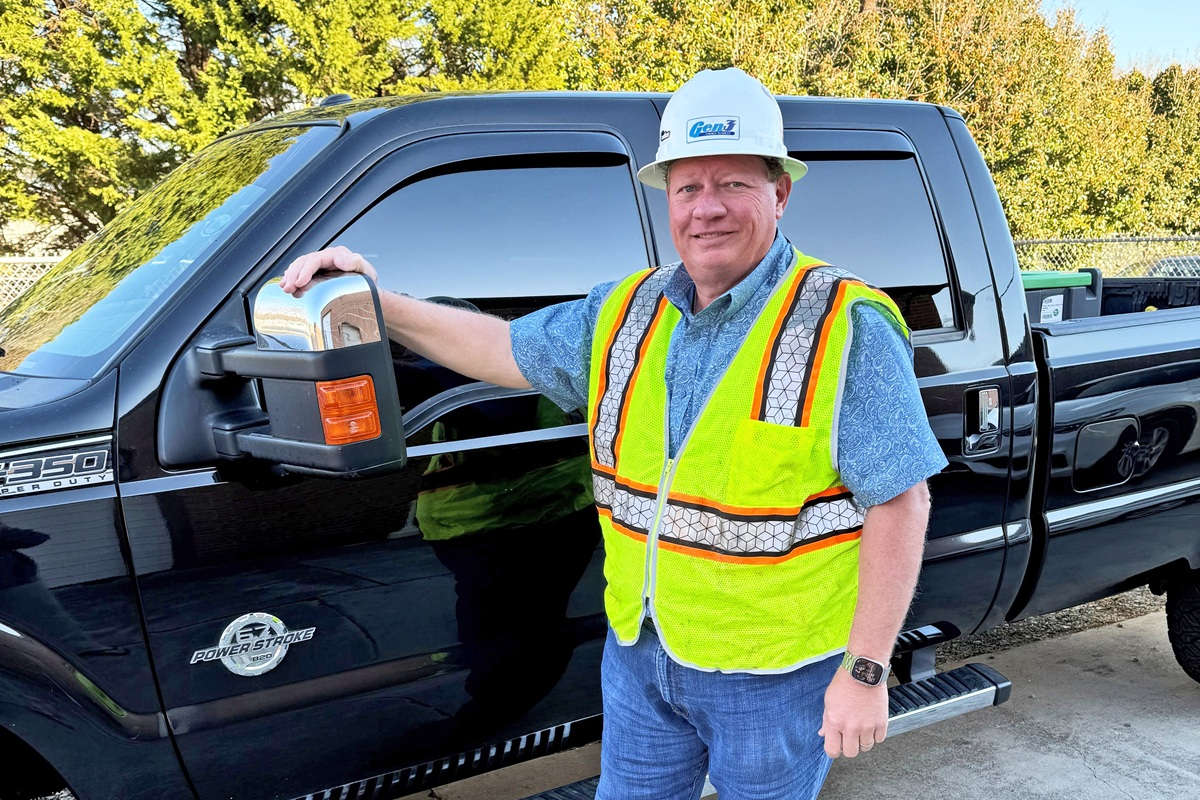Utility Player

According to Mike Fitzgerald, Bobcat Co. Loader Product Specialist, compact track loaders and skid steer loaders and their attachments are designed to perform many of the tasks involved with utility installations from trenching to compacting, to moving supplies and components, to landscape finish work. “A key equipment trend we’re seeing is utility contractors are buying more compact loaders due to the machines’ overall versatility and ability to access tight areas that would otherwise be difficult with larger equipment,” says Fitzgerald.
Getting Size Wise
Compact skid steers and track loaders are a practical addition to utility contracting fleets because their role and duties can easily adapt to the scale of many different operation or project sizes. At widths as narrow as 36 in., these loaders can go through typical residential, commercial or municipal gates and entries where larger equipment won’t fit. On the other end of the loader spectrum, high-flow hydraulics, rated operating capacities that approach 4,000 lbs and lift arms that raise to heights of 12 ft provide the utility contracting industry powerful digging and lifting capacities.

As developers and municipalities maximize land space, lot lines are getting tighter. A compact loader’s size allows operators to easily negotiate obstacles and cramped areas.
“If you’re a larger utility contractor with a big trencher or some other dedicated machine, you can accomplish projects in open spaces, but you won’t be able to access work in tighter areas,” says Fitzgerald. “A skid steer loader or a track loader with trencher or backhoe attachments will allow you to get into those areas to do tasks in corners and work alongside buildings or other obstacles.”
Replacing junction boxes is easier with a compact loader than a full-size machine as well. Loaders have the lifting capacity to handle the weight of the box, and their size allows them to access gates or fenced-in locations without removing the amount of fence required to drive a mid- to full-size trencher onto a property.
Likewise, a compact track loader’s tracks can also help contractors improve profit margins. A compact loader’s high flotation can minimize damage to established surfaces, such as lawns, boulevards and landscaped areas requiring fewer repairs at a job’s completion.
Likewise, if utility installation jobsites contain soft or muddy ground conditions, or if crews must be productive in applications that contain sandy soils and granular-type materials, a compact track loader’s tractive effort and low ground pressure significantly increases its mobility. This can extend the work season so that projects can be started earlier in the spring and finished later in the fall depending on jobsite conditions.
Greening Budgets
Contractors large and small can improve their bottom lines with a piece of versatile compact equipment that offers maximum application for their investment. Loaders configured with dozens of different attachments that are quick and easy to exchange can perform a wide scope of utility installation work. Performing tasks such as augering, trenching, compacting, cutting concrete and grading can help businesses expand core services or secure certain segments of bids — such as landscaping — that are traditionally subcontracted.
“One of the main financial advantages of owning a compact loader is that with the purchase or rental of several different attachments, a utility contractor can have a higher utilization rate compared to operating and maintaining several different pieces of dedicated equipment,” says Fitzgerald.
For example, Fitzgerald says, a contractor who may have used a dedicated trencher to excavate for product installations may find it more cost-effective to use a compact loader with a trencher attachment. That attachment can be exchanged for a compactor to pack the trench and a grading blade or bucket to prepare the area for reseeding. A loader can be turned into a high-performance grading machine with a laser-guided system for precision grade control. Additionally, machines outfitted with wheel saws and high-flow hydraulics can cut through asphalt, concrete, frozen ground and other types of materials to open a trench for utility lines.
Growing Innovations
If a contractor hasn’t owned or rented a compact loader recently, there are a number of innovations that have been engineered into their designs in recent years. New control system options are enhancing the functionality of attachments and making them more comfortable to operate and adjust. Today, there are several types of controls available that allow operators to customize their experience and match their preferences from standard hand levers and foot pedals to selectable joystick controls that put all of the machine’s functions in an operator’s hands.
Efficiencies have also been increased with the addition of stronger hydraulics. Engine horsepower and hydraulic systems have been reconfigured for a model’s specific operating capacity to provide greater attachment performance and faster cycle times. Most manufacturers have also developed systems for optimum management of a compact loader’s speed to improve overall efficiency which can be measured in increased daily production, better fuel consumption and more precise control of machine movements.
Having a machine with speed management on a utility installation project means that once operators set their travel speed to accommodate ground conditions and establish their trencher depth to meet the job’s requirements, they’ll typically need only minor adjustments to achieve maximum efficiency of the trencher attachment.
As compact loaders continue to have an impact in the utility construction industry with their outstanding attachment versatility, ability to work in tight spaces and advances in hydraulics and controls, contractors have more potential to increase profitability and realize an even greater return on their investment.
Debbie McClung is a Public Relations Specialist, based in Des Moines, Iowa.




